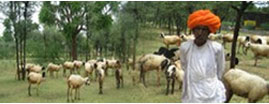S
A | B | C | D | E | F | G | H | I | J | K | L | M | N |O | P | Q | R | S | T | U | V | W | X | Y | Z
Single comb
The single comb shape is the most common variety of comb, and usually the most well known. It is characterized by a flat vertical base protruding from the top of the head, a varying number of spike-like points, and a blade. The single comb varies greatly in size from chicken to chicken and breed to breed, although rooster's combs are generally bigger. A healthy single comb is always red. Purple can signify frost-bite or other health problems, while pink is much more common, and while it can be from health problems, hens that aren't laying eggs regularly often have pink, dry combs.
Shoddy sector
The shoddy industry contributes nearly 30% to the woolen industry’s turnover. Shoddy refers to the reclaimed textile fibre from used garments, which is spun on the woolen system to make yarns suitable for making blankets, sweaters, blazer fabrics and heavy woolen jacketing material. There are about 500 units in India engaged in the production of shoddy woolen products by way of spinning, weaving or processing
Sustainable output management
In sheep rearing, this refers to the system of maintaining an optimal flock size over the years, through retention of female lambs born of ewes in the flock, and the sale of male lambs for cash returns.
Standardized selection differential in breeding
In breeding, standardized selection differential is defined as the superiority of the selected animals over all animals available for selection, expressed in standard deviation units.
Semi-scavenging
Additional supplementation by way of green fodder, locally grown grains, concentrate etc. provided to scavenging livestock.
Document Actions









